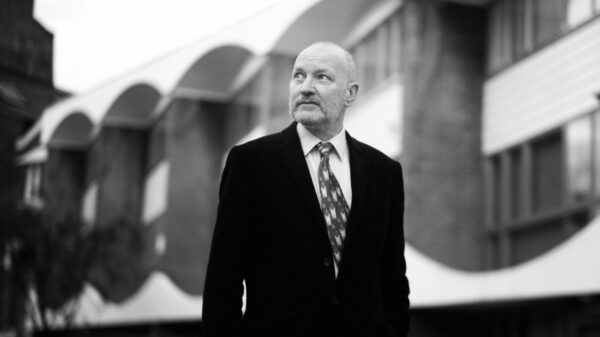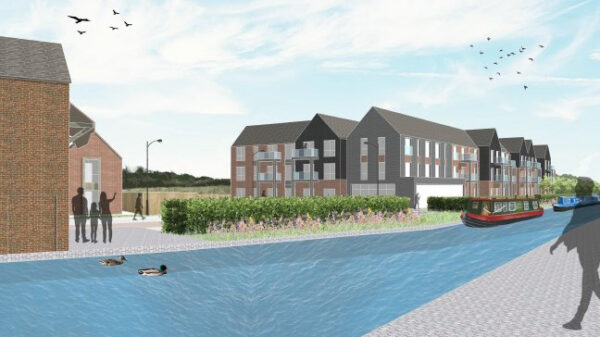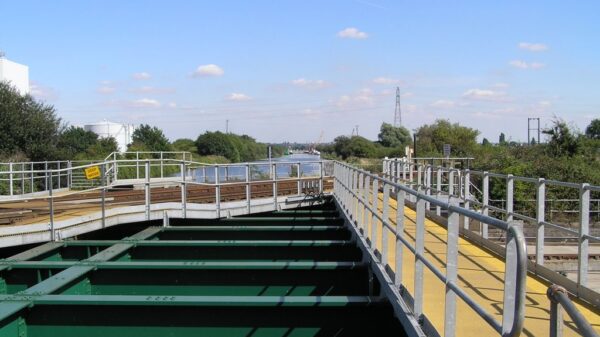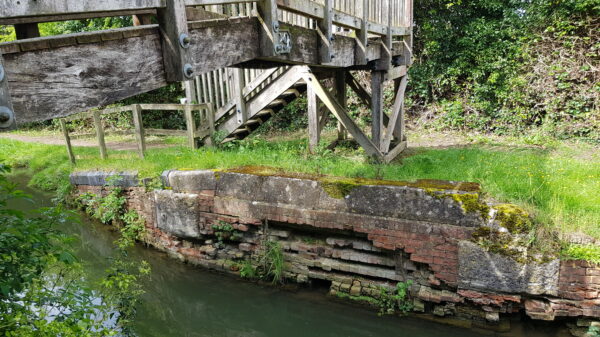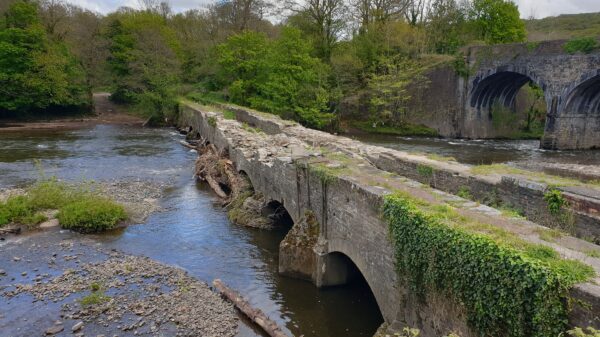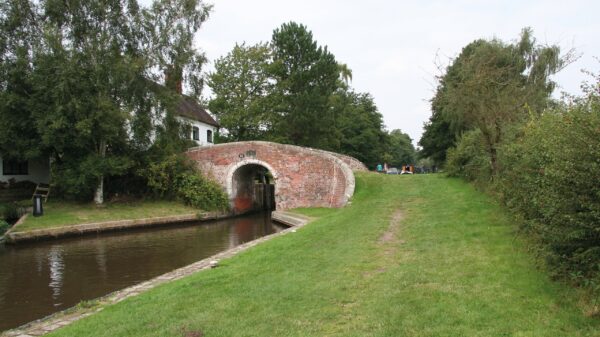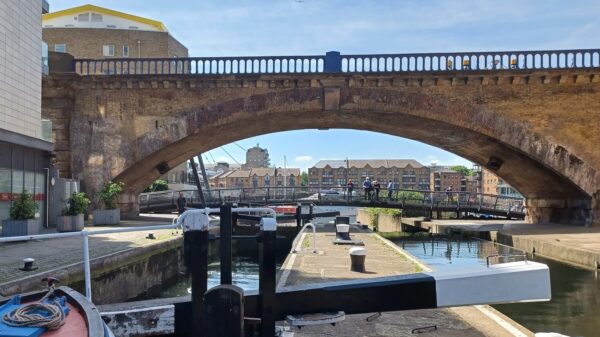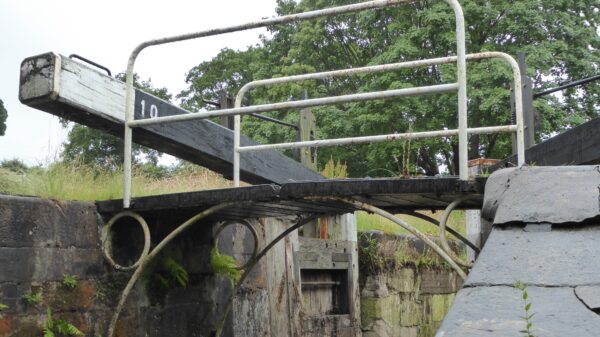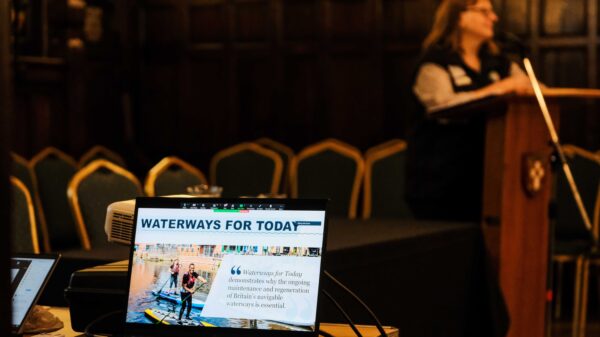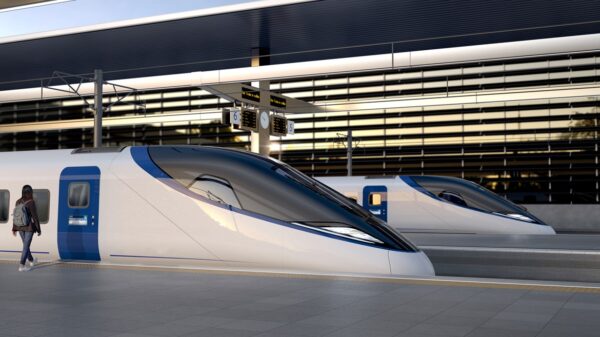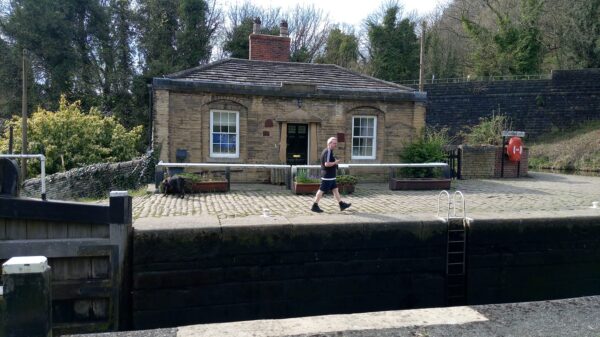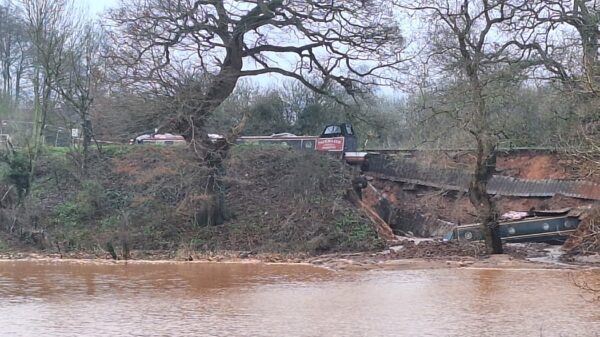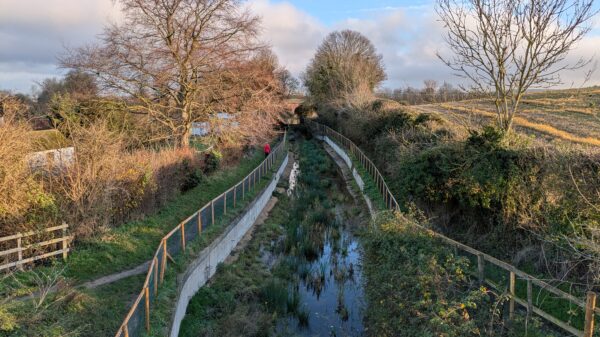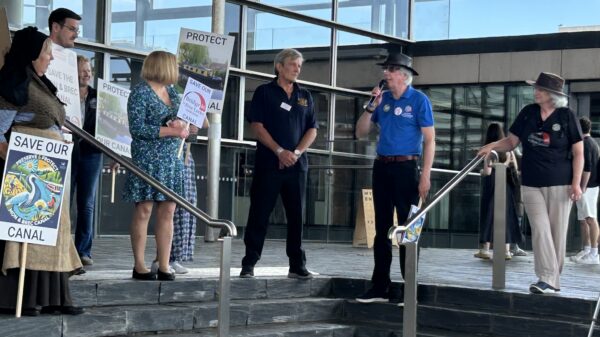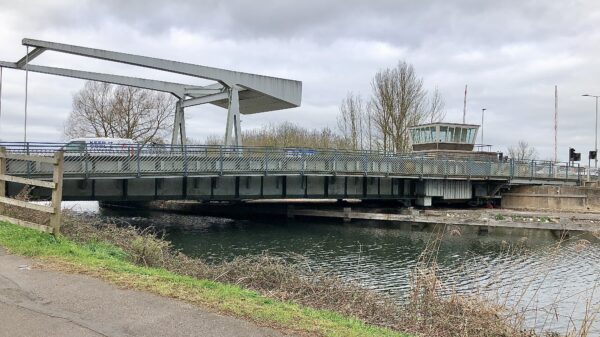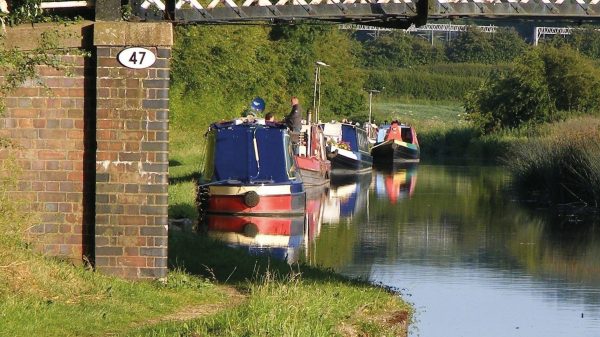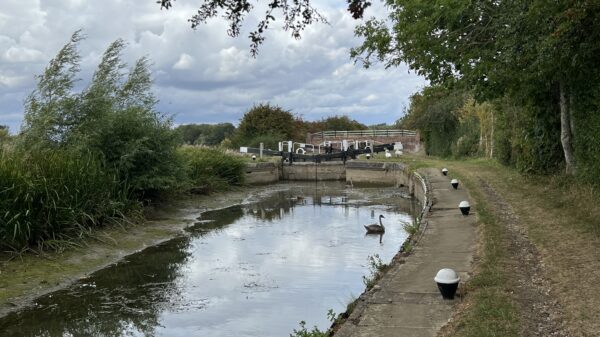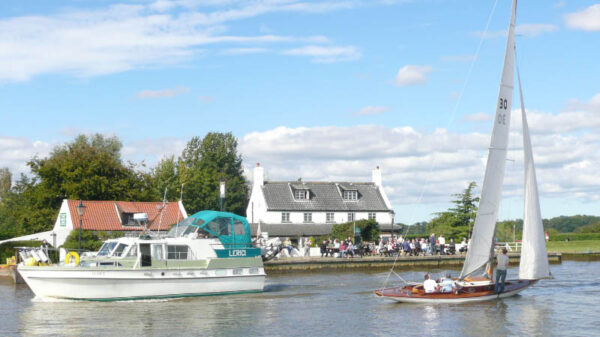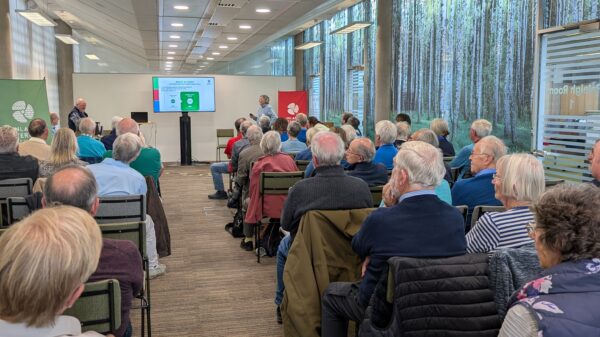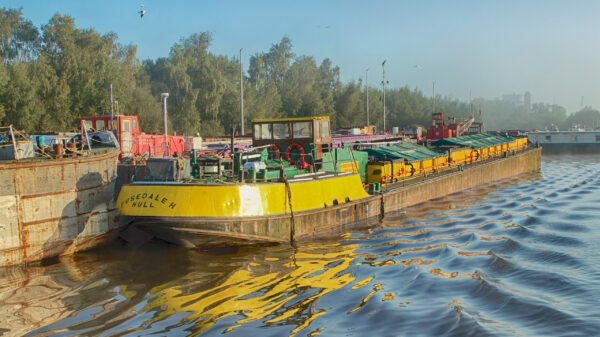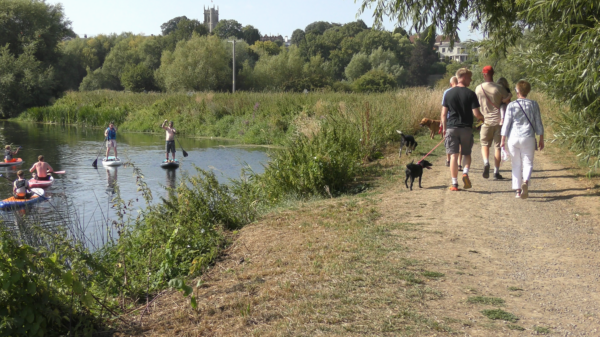| IWA Navigation Committee’s Sue O’Hare guides us through the oldest, longest, widest and brightest tunnels on the canals. Read on to find out about the tunnel that contained a canal and railway side by side and the tunnel that is now the site of Europe’s largest bat colony. |
Tunnels are a fascinating part of canal cruising, a separate world seen only by boaters and wildlife. But just how much do we know about them?
When is a tunnel not a tunnel?
A tunnel is defined by the Oxford English Dictionary as “an artificial underground passage, especially one built through a hill or under a building, road, or river”. So how does the 25-yard Dunsley Tunnel on the Staffordshire & Worcestershire Canal qualify as a tunnel, when modern motorway bridges such as the culvert under the M5 on the Droitwich Canal do not? Is it perhaps because the Dunsley Tunnel goes through the ground as opposed to a man-made structure? Then why is Deansgate Tunnel carrying the Rochdale Canal underneath Deansgate in Manchester a tunnel?
Following in the footsteps of the Persians
In the 1st millennium BC the Persian people developed a system of qanāts, gently sloping tunnels to transport water from underground sources for irrigation and domestic use. The idea spread throughout the Middle East and North Africa and qanāts are still in use today.
The first canal tunnel
The first navigable canal tunnel was the Malpas Tunnel, built in 1679 to enable the Canal du Midi to pass under the hill d’Ensérune in the department of Hérault in the south of France. The chief engineer Pierre-Paul Riquet was able to overcome the challenge of tunnelling through brittle sandstone by lining the tunnel with stone vaulting, creating a wide and high 180-yard tunnel. The hill was already the site of a tunnel dug in the Middle Ages to drain the Étang de Montady, and this is said to have provided inspiration for Riquet.
Mines and tunnels
It was almost 100 years later that the first navigable tunnels were built in the UK, first in connection with mines and then on canals built for other purposes. The link with mining was obvious: miners were the only people with digging skills, and mines needed both transport and drainage.
Wet Earth Colliery in Clifton to the north west of Manchester was the location for the earliest water-carrying tunnels, engineered by James Brindley to drain the mine. Brindley designed a complex scheme involving a weir on the River Irwell to create a head of water, which was carried under the river into the mine through an inverted siphon sinking to a depth of 53 feet. It then turned a waterwheel which drove an underground beam pump. The system was completed in 1756 and was so successful that the basic components continued in use for 170 years. The remains can still be seen in what is now Clifton Country Park.
When Francis Egerton became the 3rd Duke of Bridgewater and hired John Gilbert as factor for his estates, they realised the need to improve the productivity of the mines to meet the increasing demand for coal in Manchester. Inspired by Brindley’s work at Clifton, they hired him as surveyor. The first part of their solution was to build the Bridgewater Canal from Worsley to Salford to provide better transport for coal. The other part was to extend the canal underground at Worsley Delph, an old sandstone quarry. This work was started around 1760 and created a multi-functional ‘Navigable Level’ which could drain the mines, provide an integrated transport system, and provide a water supply for the canal. An underground canal network was developed as new coal seams were discovered. Special boats nicknamed ‘starvationers’ were used, 4½ feet wide with protruding ribs inside. By the time coal transport along the Navigable Levels ended in 1887, there were about 47 miles of underground canal on four different levels, connected by a water powered inclined plane and lifts. The system continued to be used for drainage with regular inspections by boat until it was finally closed in 1968.
In a similar way limestone was transported out of the quarries at Dudley along branches dug from the Dudley Tunnel on the Dudley No. 1 Canal, and coal at Harecastle on the Trent and Mersey. Ironically it was mining, one of the original reasons and enablers for tunnels, which led to the downfall of many tunnels through subsidence. Unlike its neighbour the Lapal Tunnel, the Dudley Tunnel survived subsidence, only to be closed through disuse. Through a huge effort by the Dudley Canal Trust it was reopened and is now the second-longest surviving tunnel. It is a particularly intriguing place to visit, with its basins open to the air, its limestone caverns and its network of side tunnels. While it is open to navigation, it is very low and no engines are permitted, so most visitors take an electric trip boat operated by the Trust.
Tunnel Mania
As canals spread so too did tunnels. The Trent and Mersey Canal is well known as a pioneer, boasting perhaps the first of all navigable tunnels to be opened on the main system at Armitage in 1770 – though this no longer exists as a tunnel, having been opened out in the 1970s after subsidence caused by coal mining. The southern section of the Staffordshire and Worcestershire Canal with its short tunnels opened in the same year.
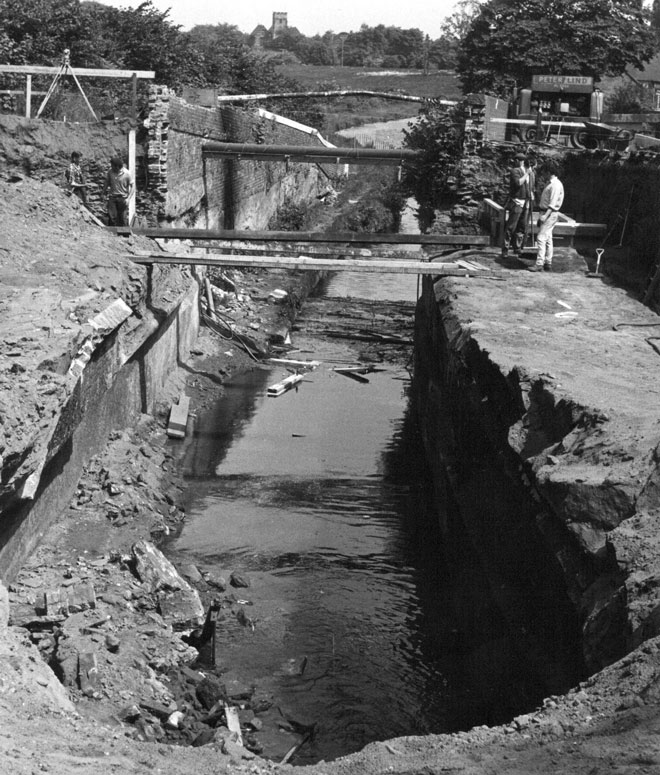 Photo: Armitage Tunnel during removal of the tunnel roof in 1971. Photo by Harry Arnold, Waterways Images.
Photo: Armitage Tunnel during removal of the tunnel roof in 1971. Photo by Harry Arnold, Waterways Images.
The three tunnels on the northern Trent and Mersey at Preston Brook, Saltersford and Barnton were among the earliest tunnels of substantial length, and are well known for their lack of straightness. Brindley’s first tunnel at Harecastle on the same canal is often thought of as an early leader for length at 2,880 yards, although his Norwood Tunnel on the Chesterfield Canal predated Harecastle as well as being the longest canal tunnel in Britain when it was opened in May 1775. Subsidence from nearby mining caused sections to sink and it eventually collapsed completely after heavy rain in 1907. The western end was filled in to enable the M1 to be built, although the eastern end is still in remarkably good condition and CRT invited members of the public to explore it during the 10-yearly inspection in 2016. The Chesterfield Canal Trust continues to develop options for replacing the tunnel in order to re-open the whole of the 46 miles of the canal, facilitated by the recent confirmation of a new route for the West Midlands to Leeds HS2 line around Norwood, running over the line of the Chesterfield Canal restoration on an embankment. The Chesterfield Canal Trust supported by IWA and CRT has proposed that the embankment be replaced by a viaduct, so that the canal could be restored on an east-west alignment giving fantastic views out to the west. The tunnel could be opened out again as a tribute to Brindley’s original work, and it might be possible to use the old canal line and reservoirs to drain the HS2 track and keep the restored canal locks topped up – and James Brindley would have the last laugh!
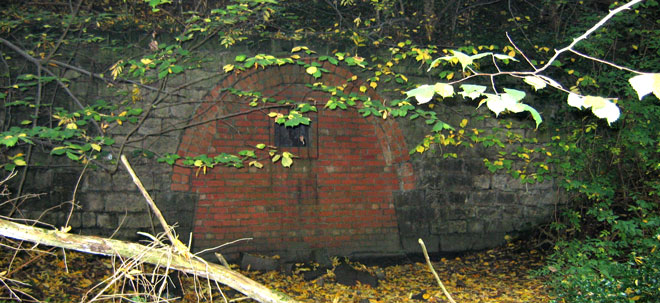 Photo: Norwood tunnel portal on the Chesterfield Canal line.
Photo: Norwood tunnel portal on the Chesterfield Canal line.
On the Cromford Canal in Derbyshire, the Butterley Tunnel of 1794 was at the time the third longest. It included an underground wharf where narrowboats were loaded with coal. Vertical shafts above the wharf enabled goods to be transported between the canal and the Butterley Company’s works on the hill above the tunnel, using a system of ‘tram boxes’ which were containers used on the Little Eaton tramway as well as carts on roads, narrowboats on the Chesterfield Canal and barges on the Derby Canal. Mining-related subsidence again claimed this tunnel.
In Shropshire a network of ‘tub boat’ canals was built to transport coal, limestone and ironstone from mines and quarries to blast furnaces producing cast iron and wrought iron. The tub boats were built of wrought iron and were rectangular, about 20 feet long and 6 feet wide, and were pulled in trains of up to 20. The 970-yard Berwick Tunnel was opened in 1797 and was the first of any length to be built with a towpath. The tunnel was not straight and it was not possible to see the far end, so a byelaw was introduced giving right of way to whichever boat reached the centre mark first while the other boat had to reverse out of the tunnel before trying again. The tunnel remains, although both ends have been bricked up.
As tunnels became more widespread, so they began to develop from the early narrow, mine-like structures. First towpaths spread, then came wide tunnels such as Sapperton Tunnel on the Thames and Severn Canal, Wast Hill on the Worcester & Birmingham Canal, Foulridge on the Leeds & Liverpool Canal, and Braunston and Blisworth on the Grand Union Canal. ‘Second generation’ tunnels were built to augment the capacity of the existing ones: firstly Telford’s tunnel alongside Brindley’s at Harecastle, and finally the last tunnel to be dug in the canal age, Netherton Tunnel which was opened in 1858. With its twin towpaths, gas lighting throughout and navigable width of 17 feet, Netherton was intended to alleviate the pressure on the narrow Dudley Tunnel and duly became one of the busiest routes in the Birmingham area.
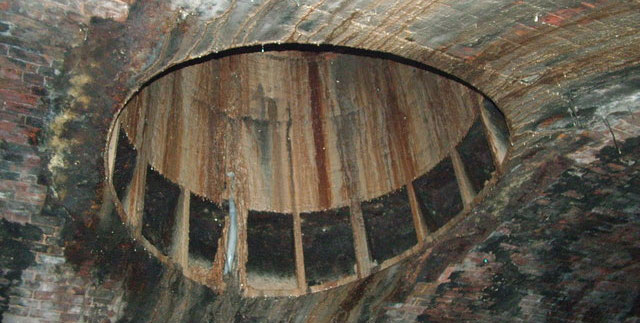 Photo: Air shaft in Netherton Tunnel. Photo by Peter Evans.
Photo: Air shaft in Netherton Tunnel. Photo by Peter Evans.
In most cases the method of construction was by digging vertical shafts down to the required level from above and then working sideways from the shafts, using them to remove the spoil. Some of the shafts would often be left for ventilation. The ‘cut and cover’ method was used In a few cases where ground conditions were particularly difficult, notably Foulridge Tunnel.
The most well-known technique of propelling boats through tunnels is legging, whereby boatmen lay on boards across the boat and walked along the tunnel walls or roof. A range of other methods was used, including poles or shafts, chains or rails, towpaths in a few tunnels, and later steam or electric tugs. An unusual system was devised by Thomas Brewin for the long, narrow Lapal Tunnel on the Dudley No 2 Canal. A pump and stop locks at each end were used to create a current to push boats through in either direction, halving the transit time from 4 hours to 2 hours. The system proved effective and continued in use from 1841 until shortly before the tunnel was closed in 1917 after a collapse.
Facts and Figures
At the time of publication in 1976 of the definitive John Gagg’s Book of Canal Tunnels there were 46 tunnels still in use, 5 tunnels that had been opened out, and over 40 disused tunnels including the four longest ever built. Interestingly there were also two on now-abandoned canals that had never been used. The Salisbury and Southampton Canal was planned to connect with the River Itchen through a tunnel at Southampton, but despite John Rennie being called in the works were never finished. The 1,250-yard Southnet Tunnel on the Leominster Canal was completed but collapsed in 1795 before the canal was opened the following year, and was never repaired.
Like the earliest canal tunnel, the longest and largest canal tunnel built to date is in France. The Rove Tunnel was opened in 1927 on the Canal de Marseille au Rhône, connecting Marseille to the River Rhône. It is almost 7,800 yards long, 72 feet wide and 27 feet high, with a water depth of 13 feet. After a partial collapse it was closed in 1963.
Restoration
Happily the situation since John Gagg wrote has improved, with the reopening of two significant tunnels. Standedge Tunnel on the Huddersfield Narrow Canal is the longest canal tunnel built in the UK at 5,698 yards, having taken 17 years and over £120,000 to construct. It is also the highest above sea level (644 feet) and the deepest underground (more than 600 feet in places). It was officially closed along with the rest of the canal in 1944, although Robert Aickman, Tom Rolt and senior IWA members famously made a difficult passage through it on ‘Ailsa Craig’ in 1948. After a £5 million project it reopened in May 2001 as part of the restoration of the entire canal. For the first few years no internal combustion engines were allowed and visiting narrowboats were towed through in convoys by an electric tug which also acted as an observation boat for the crews. Despite the provision of rubber sheets to cover boats, they were liable to be damaged in transit, and when one of the tugs needed substantial repairs British Waterways carried out a trial run for self-steer operation. Since 2009 boats have been allowed to travel through the tunnel under their own power. Numbers are limited, advance booking is needed, and a CRT chaperone travels on the boat with a service vehicle following through a parallel disused railway tunnel.
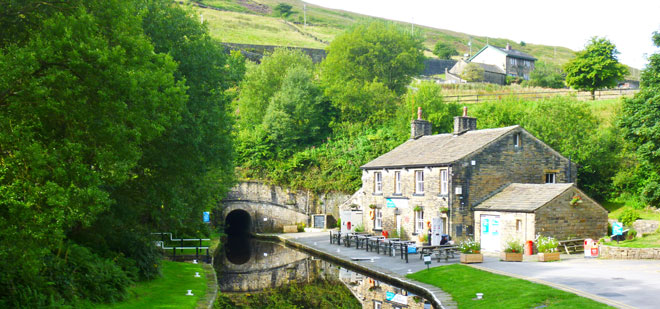 Photo: Standedge Tunnel on the Huddersfield Canal. Photo by Bob Haigh.
Photo: Standedge Tunnel on the Huddersfield Canal. Photo by Bob Haigh.
In addition the 696-yard Falkirk Tunnel on the Union Canal in Scotland was restored as part of the Millennium Link, a project to restore the Union Canal and Forth and Clyde Canal which joined them by means of a new short tunnel at Roughcastle and the Falkirk Wheel boat lift.
There are plans to restore or bypass other tunnels including the 3,817-yard Sapperton Tunnel on the Thames and Severn Canal. Passage through this tunnel is described vividly by C. S Forester in his 1953 historical novel Hornblower and the Atropos, when Captain Horatio Hornblower helps with the legging. Meanwhile the Lichfield & Hatherton Canals Restoration Trust is progressing an ambitious fundraising programme led by David Suchet, to build new tunnels under the new Lichfield Southern Bypass as well as the Cross-City railway line from Lichfield to Birmingham.
New Uses for Old Tunnels
There are several examples of unexpected new uses for both operational and derelict tunnels.
Greywell Tunnel on the Basingstoke Canal was closed in 1932 after a roof fall. It became a well-used home for bats and is now the site of Europe’s largest bat colony, with as estimated 12,500 bats of at least five species.
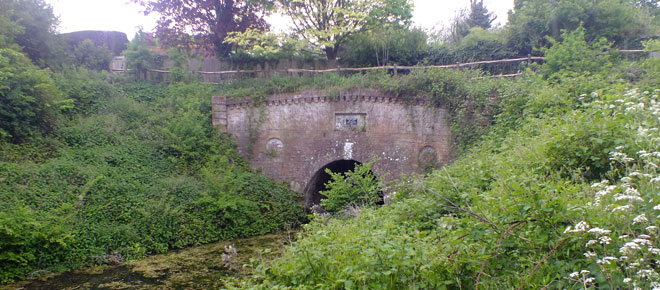 Photo: Eastern Portal of Greywell Tunnel. Photo by John O’Hare
Photo: Eastern Portal of Greywell Tunnel. Photo by John O’Hare
Perhaps surprisingly, the second longest tunnel after Standedge was Strood Tunnel on the Thames and Medway Canal in Kent. The canal was envisaged as a short (7-mile) passage between the Rivers Thames and Medway for both naval and commercial craft, avoiding the much longer journey around the Hoo Peninsula. The major engineering challenge was the chalk ridge of the North Downs, which was met with a tunnel of notable dimensions. Strood Tunnel was 4,012-yards long, completely straight, and the widest of all UK tunnels at 30 feet including a 6-feet wide towpath. Owing to the solidity of the chalk, no lining was needed, and as a result the exposed chalk reflected light so well that it was never completely dark in the tunnel during daytime. It was only wide enough for one barge and so there was a timed entry system. The tunnel soon became a bottleneck and a 150-yard section was opened out to create a passing place, resulting in two separate tunnels (the Higham Tunnel at the northern end and the longer Strood Tunnel at the southern end). When the railways arrived the Gravesend & Rochester Railway was built parallel to the canal along its length. Remarkably the single railway line shared the canal tunnel, partly supported by the towpath and partly by wooden piles driven into the canal bed. The sight of barges and trains running side by side within the tunnels must have been spectacular, but it only lasted for a couple of years before the decision was made to create a double-track railway. The canal bed within the tunnels was filled in and converted to a railway line in 1847. The tunnels are still in use and can be traversed on trains on the North Kent Line between St Pancras International and Margate – and viewed from both Higham and Strood stations.
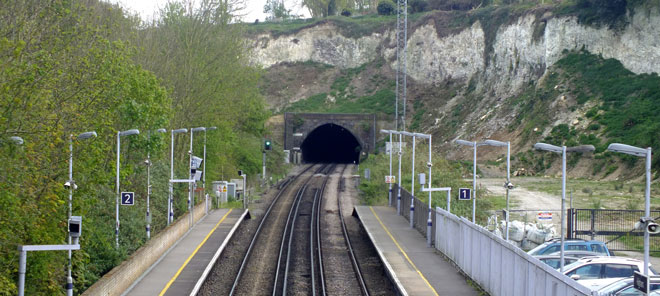 Photo: Higham Tunnel. Phot by John O’Hare.
Photo: Higham Tunnel. Phot by John O’Hare.
The Union Canal between Edinburgh and Falkirk has links with the murderers Burke and Hare, who came from Ireland as navvies to work on the canal between 1818 and 1822. They subsequently killed 16 people to earn money by selling fresh corpses for medical experimentation at Edinburgh University. When the canal was restored a new LED lighting system was installed in the Falkirk Tunnel which reveals details including candle-holders, dynamite stores and shafts, and lends itself to artistic and theatrical events. In August 2017 the tunnel became a pop-up theatre venue for a play about Burke and Hare called “The Resurrection”, in a collaboration between Scottish Canals and The Walking Theatre Company.
On a much more upbeat note, Dudley Tunnel is probably unique among canal tunnels in being licensed for civil weddings. The bride arrives on a Dudley Canal Trust tug and the ceremony is performed in the Singing Cavern, with room for 50 guests on land and a further 50 on a boat.
Photo-top: Shrewley tunnel, Grand Union Canal, Dawn. Photo by Robert Silverwood

